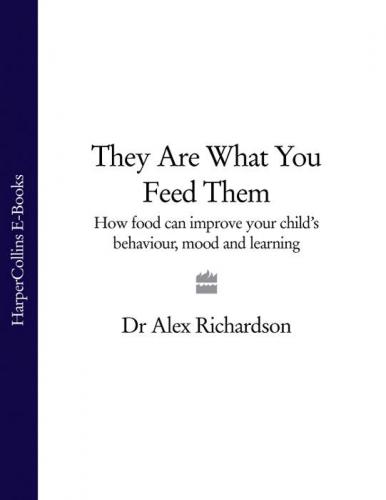Did You Know?
Historically, copper, iron, manganese and zinc deficiency have each been associated with mental impairment such as confusion, violence, feeling ‘dull’…and sometimes even death. On the other hand, too much lead can lead to brain damage, and too much copper or zinc can cause behavioural problems.
Vitamin B deficiencies and magnesium deficiencies have frequently been associated with anxiety, depression and other neuropsychiatric disorders.
What Else Children Need from Their Diet
In addition to the nutrients we’ve considered, your child also needs some other substances for good health—and once again, fruits and vegetables are the best sources.
Phytochemicals
‘Phytochemicals’ are plant compounds that help protect you from many diseases, including cancer and many disorders of the heart, circulation and immune system. They include ‘flavonoids’ (found in fruits, vegetables and red wine), isoflavones (in soya and some other vegetables) and lycopene (in tomatoes). I only have space to deal very briefly with flavonoids here, but most phytochemicals have antioxidant activity, so we’ll have a quick look at antioxidants again before we finish this overview.
Flavonoids
Flavonoids are a group of phytochemicals found in plants, and are vital components of a healthy diet. They help protect your child against bacteria, viruses and fungi, and many have anti-inflammatory, anti-allergic and immune-boosting properties. They’re found in the leaves, skin and pips of vegetables and fruit—so washed and pulped whole (preferably organic) these will provide your child with very healthy ‘shakes’ or ‘smoothies’. You’ll find them especially in dark fruits such as blueberries, dark cherries and prunes, as well as in cooked tomatoes, some forms of soy and green tea.
Antioxidants
Chemical reactions go on all the time in our bodies and brains. Some of the by-products are ‘free radicals’, dangerous substances that can attack any parts of our cells and tissues, and play a direct or indirect role in most major diseases and disorders, as well as the deterioration we’ve come to associate with ‘normal’ ageing.
Environmental pollution also exposes us to free radicals. (Smoking gives you millions of free radicals in every puff. Give up if you can—and don’t expose your child to smoky atmospheres.)
Antioxidants are our defence against free radicals, so a diet low in antioxidants means your child is more vulnerable to cellular attack. Different antioxidants act in different and complementary ways, and we need them all. For example, vitamin E is needed to stop important fatty acids from ‘oxidizing’, but it won’t work without vitamin C. The only way to give your child the full mix of antioxidants is with a diet rich in a variety of nuts, seeds, whole grains, fruits and vegetables.
Antioxidants that come straight from the diet include vitamins A, B, C and E—and also flavonoids and co-enzyme Q10. You can make some of your own antioxidants in the form of enzymes and other compounds. However, to do this you need certain minerals (for example, copper, zinc and selenium), as well as compounds such as glutathione (a peptide), oestrogen (a hormone) and melatonin (produced when you sleep).
The Antioxidant Vitamin C—for the Final ‘Mopping Up’
You really must have a mixture of antioxidants present in your body at once, as they all help each other. When an antioxidant ‘mops up’ a harmful free radical, it can in turn become a free radical itself, and then needs to be ‘neutralized’ by another antioxidant…and so on! Fortunately the end of the chain often lies with vitamin C (if you have enough of it!), which turns into a water-soluble free radical and is lost from your body when you urinate. Vitamin C is therefore a real ‘master antioxidant’. Make sure your child gets enough.
Why Don’t Dogs Eat Oranges?
Dogs and most other animals can make their own vitamin C, and it’s very handy for them. There are a few animals that can’t, and we’re one of those species. Guinea pigs can’t, either.
Your dog doesn’t need to eat fresh oranges and other sources of vitamin C, but it’s essential your child does. Incidentally, you’ll get more natural vitamin C out of fresh fruit than you will out of a carton of juice.
Practical Steps You Can Take to Prevent Malnutrition
Tackle the Dietary Issues
First and foremost—start feeding your child better! This will take time and effort, but the next few chapters will give you more information on what to do (and what not to do), and there are some tips and a plan for you to follow in Chapters 10 and 11.
Also, always ask your doctor about possible effects of any medications on your child’s nutritional status.40 Likewise, tell your doctor about any complementary or alternative approaches you may be using, including dietary supplements or any other dietary strategies. This is very important. There could be interactions—positive or negative—between any different ‘treatments’ your child may receive. Be alert for these, because anything you notice may be relevant not just to your child’s health and well-being, but also to many other children—and unless you report any suspicions you may have, potential interactions may never even come to light.
Конец ознакомительного фрагмента.
Текст предоставлен ООО «ЛитРес».
Прочитайте эту книгу целиком, купив полную легальную версию на ЛитРес.
Безопасно оплатить книгу можно банковской картой Visa, MasterCard, Maestro, со счета мобильного телефона, с платежного терминала, в салоне МТС или Связной, через PayPal, WebMoney, Яндекс.Деньги, QIWI Кошелек, бонусными картами или другим удобным Вам способом.
